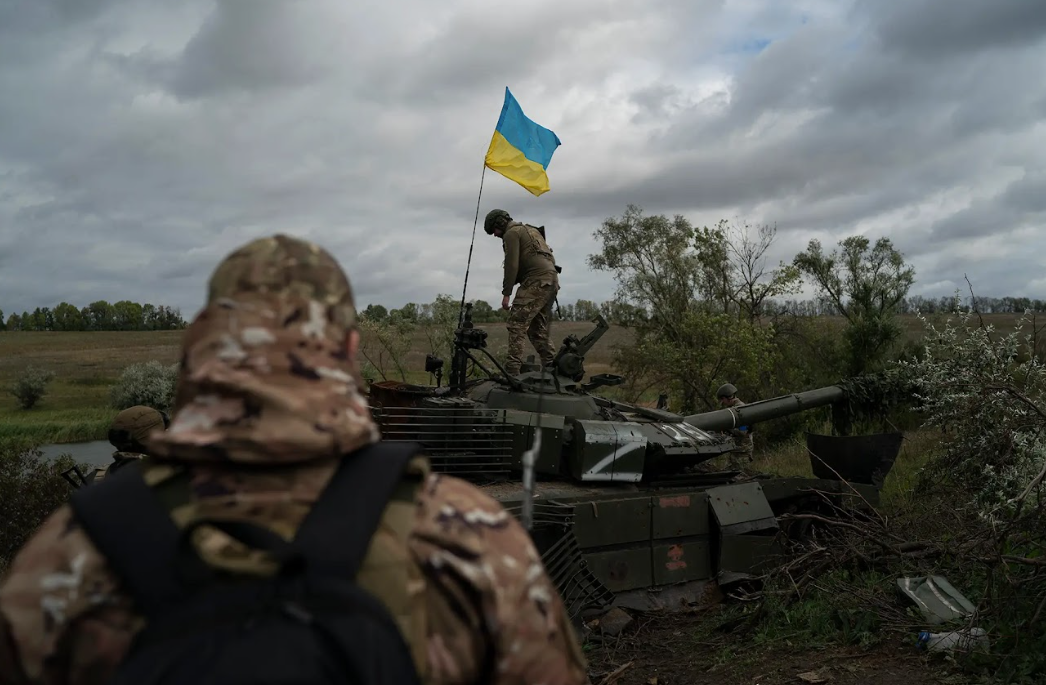It’s been over a year since the start of the war in Ukraine, which began in February 2022. Over the months, the conflict has become a steep military escalation while both parties refuse to back down. Here are some of the key events throughout the conflict:
War erupts: Feb. 24, 2022
Russian President Vladimir Putin ordered his troops into Ukraine, calling it a “special military operation” to demilitarize and denazify the nation. Ukraine’s Western allies had been warning of Russian aggression for months, but Putin’s public decisions came as a shock. Moments later, reports of fire explosions and troops crossing the border were heard. Putin threatened “consequences you have never experienced in your history” for anyone trying to interfere. However, Ukraine fought back with an exchange between Ukrainian and Russian fighters that served as an act of defiance against the much larger and more powerful invader.
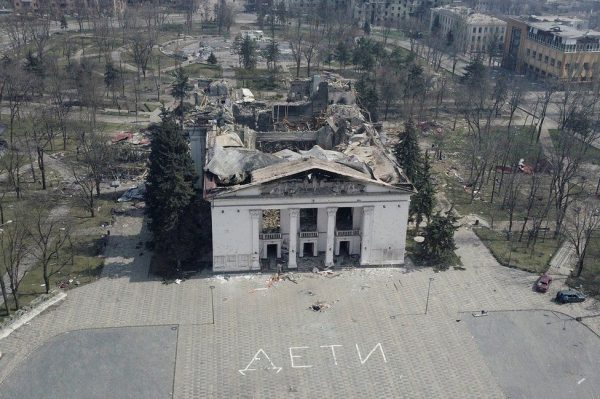
Escaping refugees: Began February 2022
Russia’s invasion forced hundreds of thousands of Ukrainian civilians to flee the country. People had to wait several days to cross into neighboring Poland, cram into overcrowded carriages at the train stations, or wait in long lines at the border in their cars. The United Nations refugee agency (UNHCR) reported that at least 100,000 had left their home within 24 hours of the first attack.
This crisis is still ongoing, with refugees streaming out of the country day by day. There are over 8.2 million refugees from Ukraine across Europe, according to the UNHCR. As the war continues into 2023, the conflict will endanger the lives of even more people.
Irpin Bridge: March 6, 2022
The Northwest suburbs of the capital were caught up in the heaviest street-by-street fighting of the war. The main bridge crossing the Irpin River was destroyed, which made evacuations difficult. Hundreds of civilians died attempting to flee, according to Ukrainian authorities.
Mariupol maternity hospital attack: March 9, 2022
Despite Russia agreeing to a 12-hour pause in hostilities for refugees to escape, a maternity hospital in the southeastern city of Mariupol was hit by a missile. A woman and her baby died in the bombing; the incident symbolized Russia’s senseless aggression.
Mariupol Theater bombing: March 16, 2022
The violence in Mariupol continued as the city had been under siege for weeks. The bombing of Mariupol’s Drama Theater was the most violent attack on civilians. Officials estimated about 1,300 people sheltering in the theater at the center of the city. 600 people died that day, but many reports suggest the number could be higher.
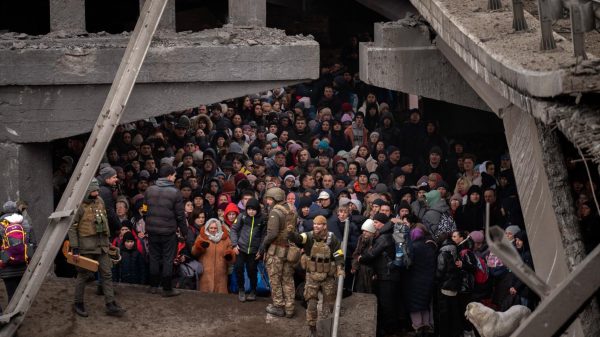
Atrocities in Bucha: April 1, 2022
When Russian troops withdrew from Bucha in early April, images of cruel executions and brutalities were exposed. They showed dozens of bodies scattered across a street in Bucha, which prompted calls for Russia to be investigated for war crimes. Russia claimed the images were fake and persecuted several Russian journalists and activists for spreading “false information.” However, experts from the Organization for Security and Cooperation in Europe said they found “grave breaches” of international humanitarian law from Russia.
Moskva sinks: April 14, 2022
Serving as a major military embarrassment for Russia and the biggest wartime loss of a naval ship in 40 years, Moskva, the flagship of Russia’s Black Sea fleet, sank on April 14. The cause remains disputed as Ukraine claims to have the Moskva with anti-ship cruise missiles and sparked a fire, while Russia blamed a fire of unknown origin.
Russians flee Kharkiv region: September 1, 2022
A brutal Ukrainian counteroffensive in eastern Ukraine pushed Russian forces out of the Kharkiv region and regained large swaths of territory. While Russia claimed the withdrawal was just “regrouping,” their military was publicly criticized by many high-profile loyalists like the head of the Chechen Republic, Ramzan Kadyrov.
Start of Russia’s partial mobilization: September 21, 2022
After many embarrassing defeats in Ukraine, Putin announced Russia’s first mobilization since WWII. Men of fighting age were selected for the draft and troop numbers significantly increased, but not without controversy and protest. With poorly equipped fighters that were mostly untrained, the mobilization had many flaws.
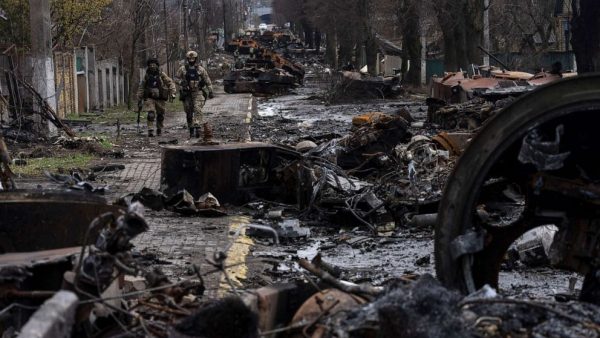
Crimea bridge attack: October 8, 2022
An explosion destroyed the only bridge connecting Russia with the Crimean Peninsula, serving as a major blow to Moscow. The bridge is strategically important and hugely symbolic, as it was constructed by Putin in 2018, four years after Crimea was illegally annexed from Ukraine.
Kyiv blackout: October 10, 2022
Russia launched the first wave of missile strikes on Ukraine’s energy infrastructure, ushering in a new phase of the war. Moscow targeted Ukraine’s power facilities using missiles, artillery shells, and Iranian-made drones that left many areas of the country without power and water.
Kherson liberation: November 12, 2022
The southern city of Kherson was finally liberated after eight months of Russian occupation, with scenes of celebrating residents. Kherson had been the only regional capital Russian forces had occupied, and their hasty withdrawal was another bleak moment for Moscow.
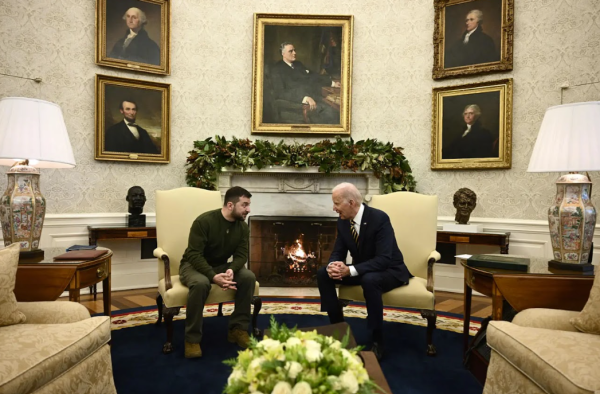
Zelenskyy visits the White House: December 21, 2022
The President of Ukraine, Volodymyr Zelenskyy traveled to Washington DC to speak to President Biden and the US Congress. It was a historical and important visit, as it was Zelenskyy’s first foreign trip since the start of Russia’s invasion. Just before his arrival, Biden announced it was sending nearly $2 billion in additional security assistance to Ukraine which included a new Patriot air defense system.
Germany sends tanks to aid Ukraine: January 25, 2023
Germany announced it would provide Leopard 2 tanks to Kyiv, and around the same time, Biden said the US would be sending 31 M1 Abrams tanks to Ukraine as well. Germany’s aid served as a major breakthrough in the West’s support of Ukraine.
Biden visits Kyiv: February 20, 2023
Biden made a hugely symbolic visit to Kyiv, his first since Russia’s full-scale invasion. Zelenskyy recalled a conversation he had over the phone with him, “One year later, Kyiv stands. And Ukraine stands. Democracy stands,” Biden declared. “The Americans stand with you and the world stands with you.” Zelenskyy said Biden’s visit brought Ukraine “closer to victory.”
Though the conflict has spanned for over a year now, there doesn’t seem to be an end in sight. Currently, neither the US nor any other countries have sent military troops for fear of increasing Russian hostility and starting a third world war. However, the US has sent more than $30 billion worth of gear to Ukraine, and many other Europeans have also sent weapons and supplies. Ukraine continues to push forward against the Russian forces and defend their home.

